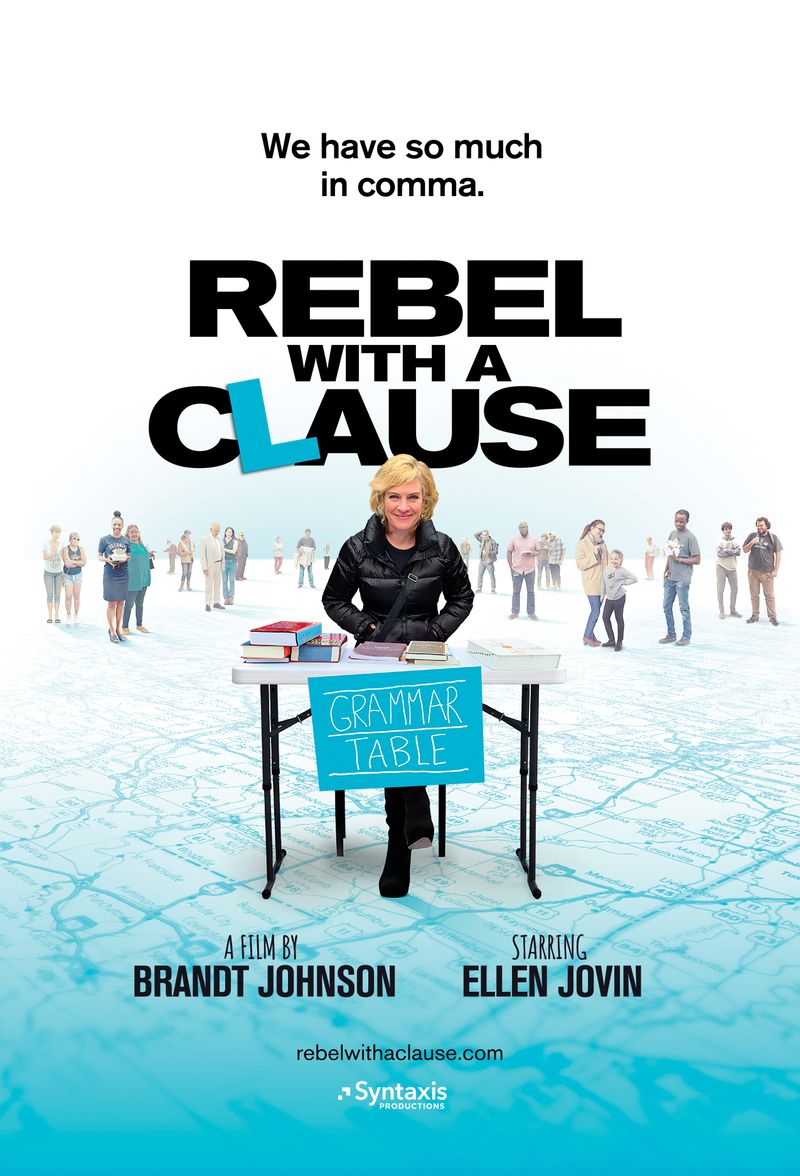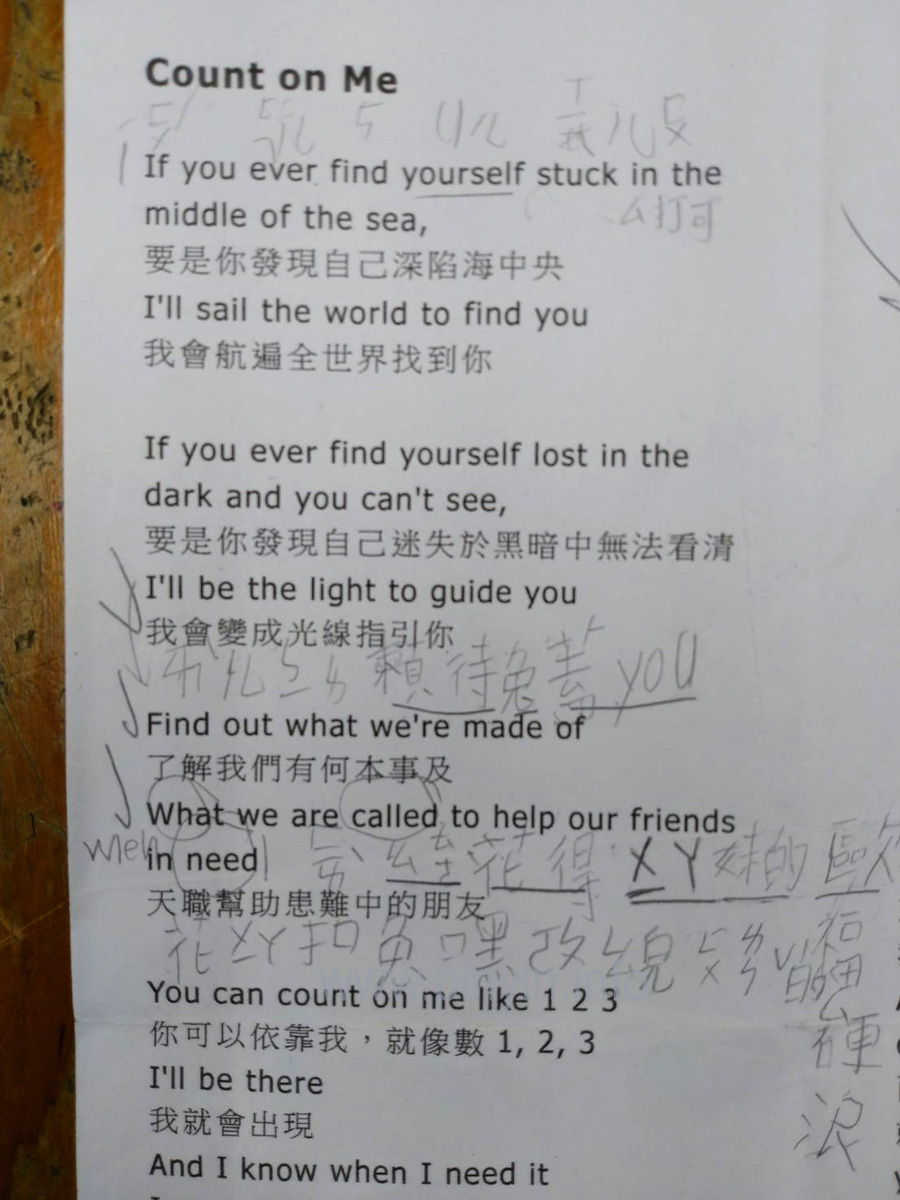"Rebel With A Clause"
According to the publicity page:
One fall day in 2018, Ellen Jovin set up a folding table on a Manhattan sidewalk with a sign that said “Grammar Table.” Right away, passersby began excitedly asking questions, telling stories, and filing complaints.
What happened next is the stuff of grammar legend.
Ellen and her filmmaker husband, Brandt Johnson, took the table on the road, visiting all 50 US states as Brandt shot the grammar action.
Read the rest of this entry »
The Knowledge
Chatting with my London cabbie on a longish ride, I was intrigued by how he frequently referred to "the Knowledge". He did so respectfully and reverently, as though it were a sacred catechism he had mastered after years of diligent study. Even though he was speaking, it always sounded as though it came with a capital letter at the beginning. And rightly so, because it is holy writ for London cabbies.
Read the rest of this entry »
More WotY action
From The Washington Post:
The Oxford English Dictionary blew it in The Oxford English Dictionary blew it in anointing “brain rot” as the word of the year.
First off, that’s two words. But the real miss was overlooking the rightful winner, “slop,” which was on the dictionary publisher’s short list for word of the year. That’s like Beyoncé losing the top Grammy award to Harry Styles.
From The Economist:
SOME YEARS it is hard to identify the main event, much less sum it up in a word. This is not the problem in 2024; the return of Donald Trump to the White House after a four-year absence is consequential not only for the world’s most powerful country but also for its neighbours and everywhere else. Which word can capture the mix of surprise, excitement and trepidation people feel as the MAGA movement returns to power?
Read the rest of this entry »
More AI satire
OpenAI comms: [underspecific hype-y 'big tings coming!!' pls like and subscribe]
Google comms: [corporate vagueness about Gemini3-0011 v2 FINAL.docx on Vertex available to 14 users]
GDM comms: [we have simulated a rat's brain capable of solving 4D chess, but we're not sure why]…— Séb Krier (@sebkrier) December 3, 2024
Read the rest of this entry »
The "Letter Equity Task Force"
Previous LLOG coverage: "AI on Rs in 'strawberry'", 8/28/2024; "'The cosmic jam from whence it came'", 9/26/2024.
Current satire: Alberto Romero, "Report: OpenAI Spends Millions a Year Miscounting the R’s in ‘Strawberry’", Medium 11/22/2024.
OpenAI, the most talked-about tech start-up of the decade, convened an emergency company-wide meeting Tuesday to address what executives are calling “the single greatest existential challenge facing artificial intelligence today”: Why can’t their models count the R’s in strawberry?
The controversy began shortly after the release of GPT-4, on March 2023, when users on Reddit and Twitter discovered the model’s inability to count the R’s in strawberry. The responses varied from inaccurate guesses to cryptic replies like, “More R’s than you can handle.” In one particularly unhinged moment, the chatbot signed off with, “Call me Sydney. That’s all you need to know.”
Read the rest of this entry »
Iranians in medieval Scotland
This post doesn't cite any Iranian language materials directly, but I dare say that Iranian speakers were involved in the transmission of this large hoard from western Central Asia more than a thousand miles distant and were present in the British Isles during the first millennium AD.
"Amazing’ Viking-age treasure travelled half the world to Scotland, analysis finds", by Dalya Alberge, The Guardian (Sun 1 Sep 2024)

Lidded vessel is star object in rich Galloway Hoard and came from silver mine in what is now Iran
AI Overview (sometimes) admits that it doesn't have an answer
When I first encountered AI Overview (AIO) about half a year ago, I was amazed by how it would whirl and swirl while searching for an answer to whatever query I had entered into the Google search engine. It would usually find a helpful answer within a second.
As the months passed, the response time became more rapid (usually instantaneous), the answers better organized and almost always helpful, but sometimes AIO would simply not answer.
About a week ago, I was stunned when occasionally AIO — after thinking for a split second — would declare that it didn't have an answer for what I had asked about.
Read the rest of this entry »
Mandarin phonetic annotation for English
The PRC uses hànyǔ pīnyīn 汉语拼音 ("Sinitic spelling") for phonetic annotation, Taiwan uses zhùyīn fúhào 注音符號 ("phonetic symbols") for the same purpose. Since we are well acquainted with pīnyīn, but not very familiar with zhùyīn fúhào, I will focus on the latter in this post:
Mark Swofford, "If you ever find yourself stuck on how to pronounce English", Pinyin News (5/7/23):
Here are some lyrics from a popular song, “Count on Me,” by Bruno Mars, with a Mandarin translation. The interesting part is that a Taiwanese third-grader has penciled in some phonetic guides for him or herself, using a combination of zhuyin fuhao (aka bopo mofo) (sometimes with tone marks!), English (as a gloss for English! and English pronunciation of some letters and numbers), and Chinese characters (albeit not always correctly written Chinese characters — not that I could do any better myself). Again, this is a Taiwanese third-grader and so is someone unlikely to know Hanyu Pinyin.
Read the rest of this entry »
Recycled bezoar, part 2
shaing tai suggests this "possible clue about the mystery":
"11 Wàn yuán yī kē Angōng niúhuáng wán, guòqí 'shényào' chéng tiānjià cángpǐn hūyoule shéi”
Wèishéme guòqí de Angōng niúhuáng wán rúcǐ zǒuqiào? Shāndōng zhōng yīyào dàxué yào xuéyuàn shēngyào xì zhǔrèn Lǐ Fēng jiàoshòu fēnxī, xiànzài shìchǎng shàng zhǔyào shōugòu 1993 nián qián shēngchǎn de Angōng niúhuáng wán, qí zhǔyào yuányīn jiùshì,1989 nián wǒguó shíshī “Yěshēng dòngwù bǎohù tiáolì”, xiàndìng 1993 nián yǐhòu, yěshēng xīniújiǎo bèi mínglìng jìnzhǐ yòng yú zhìyào yuánliào, yuán yǒu de shèngyú xījiǎo yuánliào bèi fēngcún, yòng yú yánjiū děng tèshū yòngtú. Shēngchǎn chǎngjiā yúshì gǎi yòng shuǐniú jiǎo de nóngsuō fěn tìdài tā. Cǐwài, tiānrán niúhuáng, tiānrán shèxiāng yě hěn ángguì, yóuyú yuánliào xīquē, xiànzài de Angōng niúhuáng wán duō gǎi yòng réngōng shèxiāng děng tìdài pǐn.
Read the rest of this entry »



